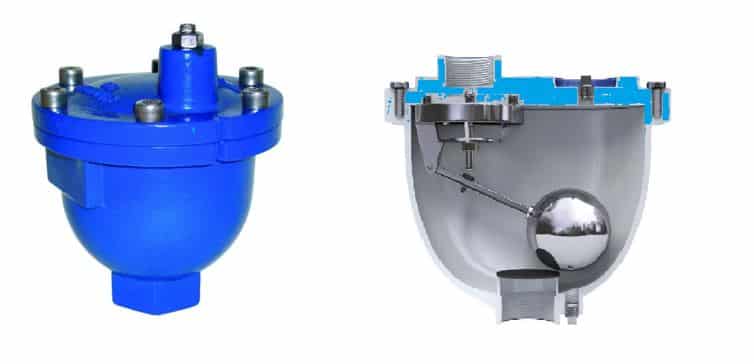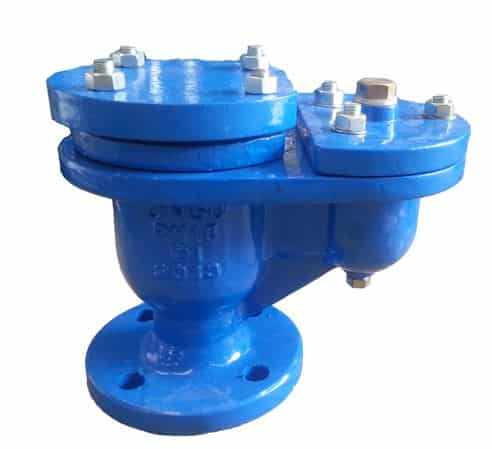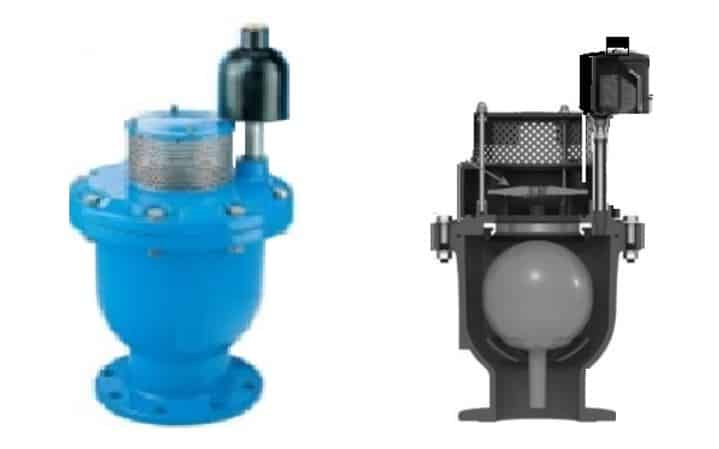The excess air in a pipe can impede the fluid flow. Thus, the air in pipe cause slower flow, turbulence, and corrosion. To avoid all theses problems air valve is fitted in the pipe to vent the excess air.
Water contains oxygen, that is why we will always find dissolved air in the water. The formation of air bubbles takes place when the temperature increases or the pressure decreases.
Another way in which air can enter the systems is that there are cracks or bad connections in the valves, tubes, pumps, etc. Air can also enter the suction of the pumps because of the faulty seals, the foot valve is at a high level concerning the water sheet, or also by the vortex that forms at the time of suction.
Air in pipes can be found as large settled pockets or as large and small bubbles that are in motion. The large pockets of accumulated air can block the flow of water.
Purpose of Air valve
Uncontrolled accumulation of air is a safety problem. However, safety problems can also happen due to the absence of air in the pipes. The collapse of the system due to depression or negative pressures and collapse due to water hammer.
How air pockets form in pipes ?
Air bubbles collect on high spots of pipes and form pockets. As the cross-section of the water flow under the bed is reduced, the velocity of the flow is increased.
At a higher speed, the flow can move small bubbles, but it does not have enough energy to move larger packets. The packet breaks down and is carried downstream, forming an elongated air packet at the top of the tube.
In long horizontal sections of the tube, bubbles collect at the top and form pockets.
Negative effects of air in the pipes
Obstructions – Depending on the amount of accumulated the pipes can be partially or completely blocked by accumulated air.
Breaks – Overpressures and pressures can cause harm to the pipes.
With the loss of efficiency and increase in energy costs, pumps must work harder to achieve the required flow rate.
Advantages of Air valve in the pipes
Emptying of Pipes
Protect the installation from the harmful effects of depressions during the emptying of the pipe. Air valves allow the entry of large amounts of air and thus avoiding breakage and eventual collapse due to crushing.
Filling Pipes
Allow air to escape during filling, thus eliminating air pockets that disturb the flow of water and that can sometimes lead to total obstruction. Avoiding the reduction of the flow transported and the increase in energy losses and the consequent increase in operating costs.
Air Purge during System Operation
Allow the evacuation or purge of small air flows during operation in conduction mode.
Disadvantages of Air Valves
- Reduction in effective area: The air bubbles in pipe reduce the effective cross section area of the pipe, as a result cause head loss or pressure loss.
- Inaccurate readings on gauges and hydrometers.
- Cause damage to internal rotating parts of gauges.
- Inadequate water supply because of incorrect meter and hydrometer readings.
- Corrosion and Cavitation problems
Applications of Air Valve
Wastewater and wastewater pumping stations – Air relief, vacuum prevention, and water hammer protection.
- Sewage and Sewage Pipelines – Protection against air and gas build-up, and vacuum formation at elevations, grade points, and road or watercourse crossings.
- Wastewater and wastewater pumping stations – Air relief, vacuum prevention, and water hammer protection
- Residual and sewage water – Protection against the formation of vacuum, pressure waves, and water hammer at points prone to separation from the water column.
- Municipal and industrial wastewater treatment plants – Protection against the accumulation of air and gas, and the formation of a vacuum.
Installation locations of Air valve
Air valves are recommended at the following points along the pipelines. Air valves must be installed on a shut-off/isolation valve to allow maintenance with the system in operation.
- High points
- Long horizontal runs
- At Long descents
- Long ascents
- Decrease in up-slopes
- increase in up-slopes
Types of Air valves
According to the air valve operation, there are three main categories of air valves.
- Automatic Air Valve
- Kinetic Air Valve, Double Acting
- Combined or Triple Effect Air Valve
1. Automatic Air Valve

Another name of automatic valve is a purge air valve. When the line is under pressure, an orifice in the automatic air valve releases a large amount of air during operation in driving mode. Its operation is reliable and prevents water hammers.
2. Kinetic Air Valve (Double Acting)

Air enter the pipe during filling, eliminating air pockets that disturb the flow of water.
It protects the installation from the harmful effects of depressions during the emptying of the pipe, preventing breakage and eventual collapse due to crushing.
3. Combination Air valve (Triple Effect Air Valve)

It combines the operation of the kinetic and automatic components.
- Combination air valve helps to evacuate air during the filling up of a pipeline.
- Allows efficient release of air pockets from pressurized pipes with a surge protection device minimizing potential water hammer.
- Enable large volume of air intake in the event of network draining.
The combination air valve is an advanced aerodynamic design and construction with a double orifice anti-slam/slow closing device.
This valve provides various types of excellent protection such as against pressure surges, air accumulation, and vacuum formation. It provides improved sealing in low-pressure conditions. The valve minimizes water spraying during air release.
Body material of Air Valve
The body materials of air valves are cast iron, cast steel, or ductile iron. In some applications, Iron and steel bodies should be lined with epoxy or other products.
Read Next: